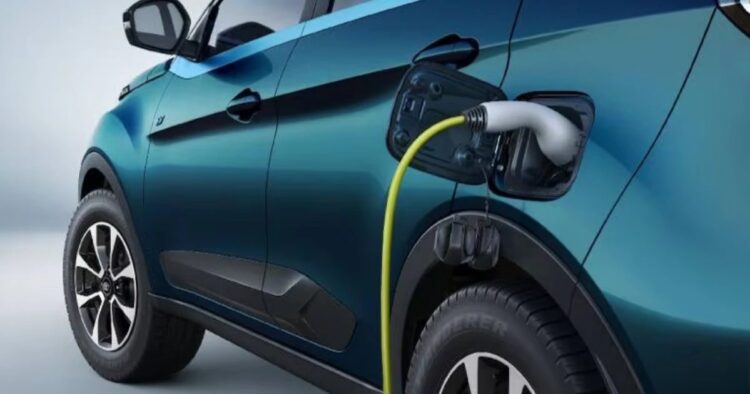In a significant move aimed at speeding up the adoption of electric vehicles (EVs) in Bharat, Mahindra & Mahindra (M&M) has announced a strategic partnership with Adani Total Energies E-Mobility Limited (ATEL). The collaboration, marked by a memorandum of understanding (MoU) signed on Wednesday, outlines a comprehensive roadmap for the development of an extensive EV charging infrastructure across the nation.
Mahindra & Mahindra, renowned as Bharat’s leading SUV manufacturer, has joined hands with ATEL, a wholly-owned subsidiary of Adani Total Gas Limited, to pave the way for a more accessible and widespread network of EV charging stations. Through this partnership, both companies aim to facilitate seamless access to charging infrastructure for EV owners, covering aspects such as discovery, availability, navigation, and transactions.
The partnership holds particular significance for Mahindra & Mahindra’s customers, notably those of its popular electric SUV, the XUV400. With access to over 1100 chargers through the Bluesense+ App, Mahindra EV owners will experience significantly enhanced convenience and accessibility to charging facilities nationwide.
Veejay Nakra, President of M&M’s automotive division, expressed enthusiasm about the alliance, highlighting its pivotal role in bolstering the EV charging infrastructure. He emphasized the company’s commitment to enhancing customer experience through strategic partnerships, aiming to broaden the EV ecosystem and drive the widespread adoption of electric vehicles across the country.
Suresh P Manglani, Executive Director & CEO of ATEL, echoed Nakra’s sentiments, stating that the collaboration with Mahindra & Mahindra signifies a significant step towards strengthening EV technology adoption as part of the energy transition. Manglani emphasized that initiatives like this would contribute to reducing carbon emissions and aligning with Bharat’s climate action goals.
The partnership between Mahindra and ATEL is not just a corporate endeavor; it also aligns with global commitments such as those made at COP26. This collaboration underscores the collective efforts required to decarbonize transportation and pave the way for a more electric and sustainable future. Through concerted action and collaboration between industry leaders, Bharat can accelerate its transition towards cleaner and more environmentally friendly modes of transportation, ultimately contributing to a greener and more sustainable future for all.

















Comments